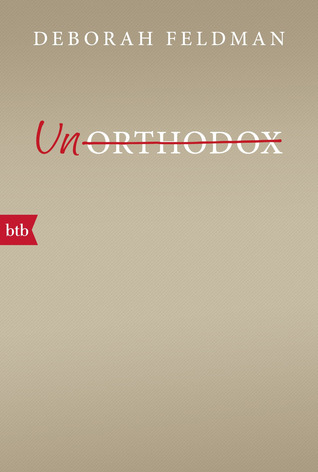Today I’ve invited David O. Stewart to visit Ascroft, eh? to discuss The Babe Ruth Deception, his latest historical novel set during the American Prohibition era.
Welcome, David. Let’s get started, shall we?
Tell us about your novel.
DOS: It’s about people swept up at the beginning of the Roaring  Twenties, a century ago, when hemlines go up and morals plunge, when every bright promise brings a dark underside. Prohibition brings illegal bootlegging and gangsters, while big-time sports attracts gamblers and the fixing of the 1919 World Series. At the center of these powerful forces stands Babe Ruth, the awesomely talented man-child who is reinventing baseball as a power game.
Twenties, a century ago, when hemlines go up and morals plunge, when every bright promise brings a dark underside. Prohibition brings illegal bootlegging and gangsters, while big-time sports attracts gamblers and the fixing of the 1919 World Series. At the center of these powerful forces stands Babe Ruth, the awesomely talented man-child who is reinventing baseball as a power game.
The mismatched protagonists of my Fraser/Cook series (this is # 3) are Dr. Jamie Fraser from Ohio and Speed Cook, a black ex-ballplayer. They connect with the Babe when Fraser’s wife produces his 1920 silent movie, Headin’ Home (Ruth really made such a movie), that was financed by a gangster who paid off the World Series bribes the year before (that part also is true!). Needing help to escape a looming scandal, the Babe turns to tough-guy Cook, though Fraser ends up holding the key to the situation.
The cross-currents grow more treacherous when Cook’s son and Fraser’s daughter launch an interracial romance that can cost them their lives in the America of 1920.
What prompted you to write about this historical event and era?

Babe Ruth
DOS: The real draw for me was Babe Ruth – he’s a legendary figure yet was a tangle of contradictions. No one has come close to his achievements on the baseball diamond: he was a great pitcher and then the greatest hitter of all time! He had a public image as a virtually uneducated, affable buffoon, while the private reality was of a man from a non-functioning family with massive appetites for food, liquor, and sex. At the same time, he invented the American phenomenon of mass celebrity. Virtually everyone in America still knows the name Babe Ruth. I wanted to dig into who he was and the times that shaped him.
How closely did you stick to the historical facts? If you used them loosely, how did you decide whether to deviate from them?
DOS: The factual framework respects the history we know. I honored all of the events in the Babe’s baseball career, right down to individual at-bats in World Series games. I figured that true fans would crucify any writer who messed with those. I also followed the facts of his movie career (which came to a speedy and richly-merited halt), of the gangsters portrayed, and of the terrorist violence that visited New York City in those years.
What research did you do for this book?
DOS: I read up on the Babe’s career and the era and also found film and audio recordings of the Babe – especially the movie, Headin’ Home, which you can watch online. I also read novels that were written in 1920 to try to get some feel for how people were using language then.
Do you use a mixture of historic figures and invented characters in the novel? Which is more difficult to write? Which to you prefer to write and why?
DOS: I sweat more over the historic figures. I feel an extra obligation when I create words and actions for someone who was a real person, who cared what people thought about him or her, and I don’t want to be unfair in my characterizations. So the invented characters tend to come easier. I made them up, so I can do with them what feels right and let the chips fall as they may.
In an historical novel you must vividly re-create a place and people in a bygone era. How did you bring the place and people you are writing about to life?
DOS: I like to go to the places where the story unfolds, and luckily Babe’s Manhattan home was in the Ansonia Hotel, a swanky spot on Broadway that still stands, now as condos. Having grown up in New York, lots of the New York locations were familiar to me, though I always look at old photos from the era, just to get the clothes and building styles right.
There often seems to be more scope in historical novels for male characters rather than female characters. Do you prefer to write one sex or the other? And, if so, why?
DOS: As someone who also writes books of history, I think your question reflects the unfortunate asymmetry of the historical record: women’s lives in the past are not as well-documented as men’s lives, so it’s more difficult to write about them. Nevertheless, some novelists do a great job of exploring women’s lives in the past (Philippa Gregory, for one). For me, writing women characters can be more challenging but I enjoy that challenge. Imagining other people’s experiences is part of the deal when you portray people of the past, or people of other races (like my character, Speed Cook). If you get it wrong, readers will let you know!
Thanks for taking the time to answer my questions, David, and good luck with your new release.
Readers can learn more about the author by visiting his website at www.davidostewart.com. Copies of the novel can be purchased at various online retailers, including the following:
Amazon | Barnes & NobleAbout David O. Stewart: Formerly a lawyer, he writes fiction and  history. His first historical work told the story of the writing of the Constitution (“The Summer of 1787”). It was a Washington Post Bestseller and won the Washington Writing Prize for Best Book of 2007. His second book (“Impeached”), grew from a judicial impeachment trial he defended before the United States Senate in 1989. “American Emperor: Aaron Burr’s Challenge to Jefferson’s America” explored Burr’s astounding Western expedition of 1805-07 and his treason trial before Chief Justice John Marshall. “Madison’s Gift: Five Partnerships That Built America” debuted in February 2015. He has received the 2013 History Award of the Society of the Cincinnati and the 2016 William Prescott Award for History Writing from the National Society of the Colonial Dames of America.
history. His first historical work told the story of the writing of the Constitution (“The Summer of 1787”). It was a Washington Post Bestseller and won the Washington Writing Prize for Best Book of 2007. His second book (“Impeached”), grew from a judicial impeachment trial he defended before the United States Senate in 1989. “American Emperor: Aaron Burr’s Challenge to Jefferson’s America” explored Burr’s astounding Western expedition of 1805-07 and his treason trial before Chief Justice John Marshall. “Madison’s Gift: Five Partnerships That Built America” debuted in February 2015. He has received the 2013 History Award of the Society of the Cincinnati and the 2016 William Prescott Award for History Writing from the National Society of the Colonial Dames of America.
Stewart’s fiction career began with the release of “The Lincoln Deception,” an historical novel exploring the John Wilkes Booth conspiracy. “The Wilson Deception,” the sequel, is set at the Paris Peace Conference in 1919. “The Babe Ruth Deception” occurs during the Babe’s first two years with the Yankees while he remade baseball and America began the modern era with Prohibition, bootlegging, and terrrorism.
Stewart lives with his wife in Maryland.
Advertisements Share this:





